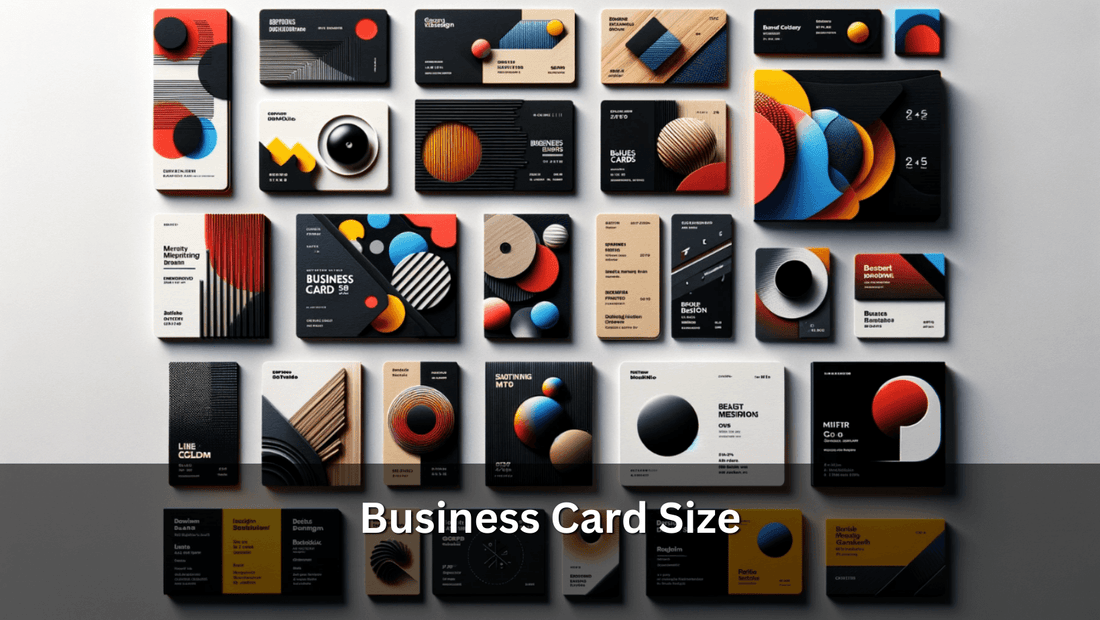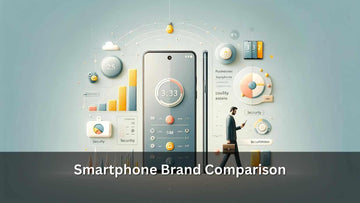Business Card Dimensions & Size Guide

Introduction
In the professional world, the business card remains a staple of networking and brand identity. Not just a tool for sharing contact information, the dimensions of a business card can significantly impact its reception and the perception of your brand. Selecting the right size and shape for your business cards is more than a matter of personal preference—it's a strategic decision that can enhance visibility, memorability, and functionality.
Standard Business Card Size
When it comes to business cards, there isn't a one-size-fits-all solution. The standard dimensions can vary by country, influenced by cultural norms and printing practices. Understanding these standards is crucial for creating a card that not only stands out but also fits comfortably in a recipient's wallet or card holder.

In the UK
The UK standard for business cards is typically 85mm x 55mm. This size is slightly wider and shorter than the ISO standard, offering a distinct shape that is instantly recognizable within the region. It provides ample space for essential information while maintaining an elegant and compact form.
In the USA
In the United States, the conventional business card size is 3.5 inches by 2 inches. This dimension aligns closely with the ISO 7810 ID-1 standard, making it a familiar and practical choice for professionals. The size is optimized for readability and portability, ensuring that your card can be easily stored and retrieved.
In Singapore
Singapore prefers a more global approach, with most business cards adhering to the standard ISO size of 85mm x 54mm. This size facilitates cross-border exchange, as it's compatible with business card holders and wallets used internationally. It strikes a balance between functionality and aesthetic appeal, accommodating diverse design preferences.
Sizes in Different Measurements
Understanding business card dimensions in various units of measurement is essential for design precision and international compatibility. Here's a quick guide to help you navigate these metrics:
-
Centimeters (cm) and Millimeters (mm): In most parts of the world, business card sizes are expressed in cm or mm. The standard size in many countries, including the UK and Singapore, is approximately 8.5 cm x 5.5 cm or 85 mm x 55 mm. This metric system is widely used due to its precision and ease of use in graphic design software.
-
Inches: The USA commonly uses inches to measure business cards, with the standard size being 3.5" x 2". This measurement is familiar to American designers and printers, aligning with other customary units used in the country.
-
Pixels: For digital designs, especially when creating business cards intended for online sharing or printing from digital files, dimensions in pixels are crucial. The resolution (PPI - pixels per inch) will affect the size; for example, at 300 PPI, a standard US business card would be 1050 pixels x 600 pixels.
-
Photoshop and Illustrator: Setting up business card dimensions in Adobe Photoshop or Illustrator requires attention to unit measurements and resolution. Starting with a template or creating a new document, input the width and height according to your region's standard, ensuring the resolution is set to 300 DPI for high-quality print output.

Shapes
The shape of your business card can make a bold statement about your brand. Beyond traditional rectangles, here are some options:
-
Standard Rectangle: The most common shape, familiar and professional, fitting easily into cardholders.
-
Square: A modern twist on the traditional card, offering a unique look but still fitting in most wallets.
-
Circle or Oval: These shapes stand out and are memorable, but they might not fit well in standard cardholders.
-
Custom Shapes (Die-Cut): Tailored to your brand, custom shapes can be anything from the outline of a product to a symbol associated with your business. While highly distinctive, they may require a larger investment in design and printing.

Design Considerations for Different Sizes and Shapes
When designing your business card, consider how the size and shape will affect the layout. A larger card offers more space for creativity but might be harder to carry. Conversely, a smaller or unconventional shape might limit space for information but will stand out in a stack of cards. Balance practicality with brand expression, ensuring your contact details are legible and the design reflects your professional identity.
Choosing the Right Size and Shape for Your Business
The decision on the size and shape of your business card should not be taken lightly. It's an integral part of your brand's visual identity and can influence first impressions significantly. Here are factors to consider:
Brand Identity and Industry Standards
Your business card is a physical extension of your brand identity. The size and shape should align with your brand's image and values. Creative industries might opt for more unique shapes to showcase innovation, while traditional sectors may prefer standard sizes for a professional look. Researching industry standards can provide insights into what is expected and accepted in your field.
Practicality and Networking Contexts
Consider the practical aspects of carrying and exchanging business cards. Standard sizes fit easily into wallets and cardholders, ensuring your contacts keep and remember your card. Unusual shapes and sizes can make a strong impression but may be less convenient for some recipients to store. Think about the contexts in which you'll be networking and choose a design that balances memorability with convenience.
Design Flexibility
The size and shape you choose will influence the design possibilities for your card. Standard sizes offer a familiar canvas for your contact information and branding elements. In contrast, unique shapes may require more creative design solutions to convey your message effectively. Ensure that your chosen dimensions allow for clear, legible text and attractive layouts.
Cost Considerations
The cost of printing can vary significantly based on the size and shape of your business cards. Standard sizes are typically more cost-effective due to common printing practices. Custom shapes or sizes may require special cutting dies or printing processes, increasing the cost. Consider your budget when deciding on the design, but remember that a well-designed card can be a valuable investment in your brand.

Conclusion
Choosing the right dimensions for your business card is a strategic decision that can influence your brand's perception and networking success. Consider your brand identity, practicality, design flexibility, and cost when selecting the size and shape. A thoughtfully designed business card not only shares your contact information but also communicates your professional identity and attention to detail.
Remember, the goal is to create a card that not only stands out but is also practical and reflective of your brand. Whether you opt for a standard size or a unique shape, ensure that your business card serves as a memorable and effective networking tool.









